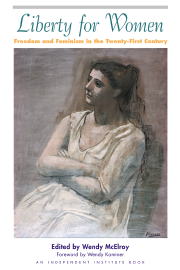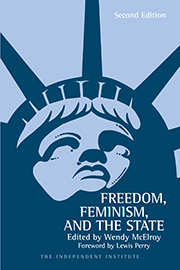Before they send their children onto a college campus in North America, parents should read two new reports.
What passes for education at many universities is not merely an intellectual embarrassment; it is also tremendously expensive. The good news: A spotlight is now shining on these problems, and students in the near future may receive the quality education for which their parents having been paying through tuition and taxes.
The first study, Death of the Liberal Arts?, was released last month by the Independent Women’s Forum. Melana Zyla Vickers examined the curricula of the top 10 liberal arts colleges as ranked by the authoritative U.S. News and World Report. She concluded, “Even at the best ... freshmen can’t obtain a sound education in history, literature and other fundamentals of civilization.”
Some of the knowledge freshmen will not find includes a course on Shakespeare at Bowdoin, any overview of American history at Amherst and an overview of any literary period at Swarthmore. Meanwhile, freshmen at William College can explore such esoteric areas as an English course on “man’s desire ... to take, order, idealize and copy nature’s bounty while humanizing, plundering and destroying the environment” even though there is no comprehensive course in history.
Only three colleges offer students “a course that could roughly be termed Western Civilization.” Only three receive a “pass”: That is, they provide a comprehensive introduction to English, history and political science, which constitute the basics of a liberal arts education.
Yet the cost for a freshman to graduate from one of the “top ten” could run as high as $120,000.
A second report, issued by the College Board, a non-profit schools association, Trends in College Pricing 2003, states, “college tuition and fees increased an average of $579 at four-year public institutions, $1,114 at four-year private institutions, and $231 at two-year public institutions” in 2002.
Most students will pay less tuition than listed in catalogues but their parents, as taxpayers, will still foot the bill. The report explains, “Almost 60 percent of undergraduates receive some form of financial aid to help them pay for college.” 2002 to 2003 saw a record amount of student financial aid—$105 billion. Although the majority of aid is awarded as student loans that must be repaid, “over $40 billion of [non-repayable] grant aid was distributed to college students by federal and state governments and by colleges and universities.”
Using research from the National Center for Educational Statistics, Neal McCluskey of the Cato Institute offers the ratio of tax to private funding. “More than half of public universities’ revenues—$79 billion—were extracted directly from federal, state and local taxpayers, while only 18.5 percent came from student fees and tuition.”
An increasing number of parents are questioning whether the money—public or private—is well used. That is, does it actually educate their children?
On Oct. 5, the New York Times ran a piece by Greg Winter entitled, “Jacuzzi U.? A Battle of Perks to Lure Students.” Winter chronicled the competitive spending on amenities through which some universities hope to attract students.
Among two of his examples: “Ohio State University is spending $140 million to build what its peers enviously refer to as the Taj Mahal, a 657,000-square-foot complex featuring kayaks and canoes, indoor batting cages and ropes courses, massages and a climbing wall big enough for 50 students to scale simultaneously. On the drawing board at the University of Southern Mississippi are plans for a full-fledged water park, complete with water slides, a meandering river and something called a wet deck—a flat, moving sheet of water so that students can lie back and stay cool while sunbathing.”
It is not clear whether the foregoing examples are exceptions or a trend. Nor whether the curricula of the “top 10” are typical or the result of other factors, such as their elitism. Whatever the answer, it is clear that significant amounts of tax and tuition money are being diverted into non-academic projects as well as being spent on courses that do not raise the quality of education. Arguably, the courses lower it.
Those who believe that a university education should prepare students for life and for making a livelihood want to know how curricula can be improved and money better spent.
On curricula: Many of the problems today are attributed to the pervasiveness of political correctness on campus. “Death of the Liberal Arts?” concludes with a encouraging section entitled “It Wasn’t Always This Way.” Vickers notes that the “shift toward political correctness is relatively new.” For example, as late as 1989, both Wellesley and Swarthmore “still offered comprehensive reviews of U.S. and European history for freshmen.” There is an obvious solution: Return to a curriculum in which knowledge is valued more than political correctness.
University academics will resist an attempt to make them accountable to those who pay their salaries. One solution: Remove obstacles to accountability, such as tenure. At the same time, privatize as much of the university system as possible so that it becomes responsive to “clients”—that is, to the parents and students who purchase and consume its services.
If clients value political correctness or water parks, then they can pay the cost both in lower academic standards and spiraling tuition. Meanwhile, those who value knowledge and skill can enjoy the comparatively modest, stripped-down tuition it would cost to acquire them.









